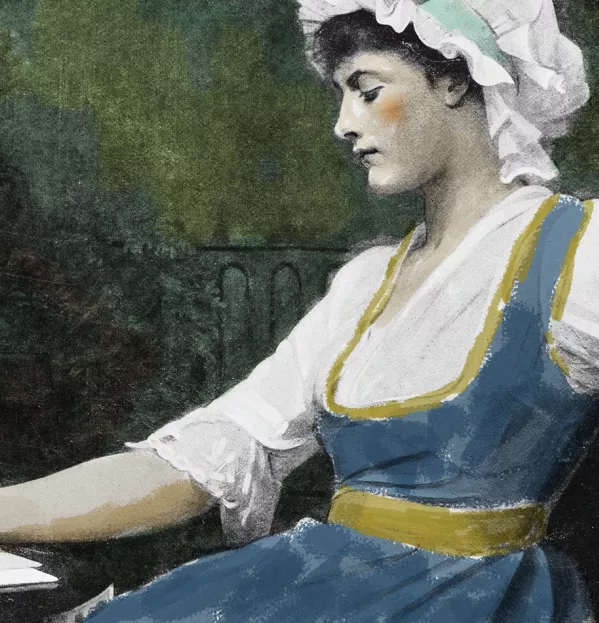- Home
- Teaching & Learning
- Secondary
- How to teach students to write excellent sentences
How to teach students to write excellent sentences

My students are playful with their speech; they often break into the odd metaphor or pun. And yet so many of them see writing as boring, functional and dry.
This was abundantly clear when I was marking their November GCSE English mock papers. Their greatest obstacle to writing lay not so much in a lack of vocabulary - although words are important - but rather in an inefficient and frequently inaccurate sentence structure.
I found they lacked an appreciation of the linguistic patterns needed to transfer the spoken voice to the written page, and an understanding of the way in which these patterns become what the writer Stanley Fish has called “engines of creativity”, giving writers the impetus to match the best words to the right shape.
I knew my students needed to grasp these concepts in order to develop their own writing. And while there is no doubt that reading is key to the development of writers because it allows them to absorb sentence structures, my students were not fluent readers.
So, I realised I needed to find different ways of exposing them to models of excellent sentences, including those written by established writers: this would allow them to internalise patterns that would help them to come up with new and exciting ideas.
My solution was to introduce an approach based on the work of Francis Christensen in Generative Rhetoric of a Sentence published in 1963, and Donald Killgallon in Grammar for Middle School, A Sentence-Composing Approach - The Teacher’s Booklet, published in 2006.
How to model excellent sentences
I set up an optional early morning intervention at 7:30 am for my Year 11s called “Apprentice Writers”, choosing a range of excellent sentences by famous writers like Aleksandr Solzhenitsyn, Neil Gaiman, John Steinbeck and Charles Dickens, and decided on four strategies to employ during each session.
To begin with, students worked in a group to unscramble the sentences that had been broken down into individual words on laminated cards.
- Dylan Wiliam’s vision for fair and accurate assessment
- Which generic phrases should teachers drop?
- How to boost EYFS? Teach teens about toddler brains
Next, having unscrambled the sentence, I led a discussion about the meaningful parts of the sentence and how the words work together. For example, we talked about the prepositional phrase in Solzhenitsyn’s sentence: “In our village, God crumbles up the old moon into stars”. Students came up with ideas about how prepositional phrases create artistry by locating abstract ideas in time and space.
I then gave them the task of coming up with a sentence of their own collaboratively, using the same pattern, and encouraged students to shape and reshape their sentences as a group.
Finally, students wrote their own sentences based on the model and, as they grew more confident, developed these sentences into a starting point for paragraphs and eventually longer pieces of writing.
The sessions ran for 10 weeks, and over time, students grew more conscious of sentence structures and became more confident in recognising a beautiful sentence. By week eight, a group of students took Steinbeck’s sentence, “The dawn came quickly now, a wash, a glow, a lightness and then an explosion of colour” and wrote their own sentence, “The trees loomed above us, a parade of colours, a canopy of leaves, a city of towers and a gathering of powerful monarchs.” They were amazed at what they produced and began to see their own potential in the patterns they were learning.
As the weeks went on, more and more students came to the sessions, and I was so pleased that the GCSE mock results from February showed that students made the most progress in the use of clauses and imagery.
Students were actively crafting language, using the sentence structure to stitch together an overall picture of what they wanted to represent, and were embedding imagery both in the sentence structures and in the piece of writing as a whole. For many of them, they achieved at least one grade higher than in their previous mock.
At the end of Apprentice Writers, students had found a way to connect with excellent sentences from the past and were beginning to use them to craft their own excellent sentences for the future.
Ruth Vandenhautte is an associate assistant principal for teaching and learning in the UK
You need a Tes subscription to read this article
Subscribe now to read this article and get other subscriber-only content:
- Unlimited access to all Tes magazine content
- Exclusive subscriber-only stories
- Award-winning email newsletters
Already a subscriber? Log in
You need a subscription to read this article
Subscribe now to read this article and get other subscriber-only content, including:
- Unlimited access to all Tes magazine content
- Exclusive subscriber-only stories
- Award-winning email newsletters
topics in this article



